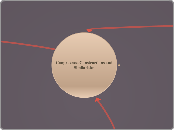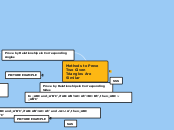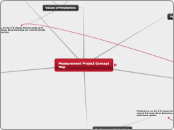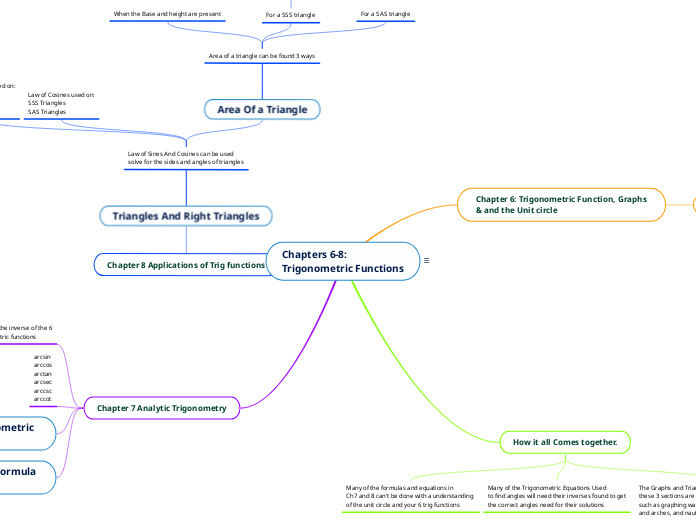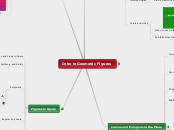Scale factor
According to the scale factor triangles are similar if the ratios of lenghts of corresponding sides are equal.
Similar Triangles
Two triangles are ᅠsimilar ᅠif they have the same shape but not necessarily the same size. Real life examples would be small scale examples such as drawing to scale.
See the attached hyperlink because it is important to know that the properties of similar triangles is not the same as congruent triangles.
Side-Angle-Side (SAS) similar property. If two triangles have similar sides along with the included angle then the triangles are similar.
Side-Side-Side similarity property. If the three sides of one triangle are proportional to the three sides of a second triangle, then the triangles are similar.
*its important to know that symbolizing a similar triangle is done with a wavy line such as this ~. Congruent sides are marked with a straight line such as this --. Similar sides will have the same number of markings for each similar side.
AAA and AA
The Angle-Angle-Angle (AAA) similarity property states that two triangles are similar if there are 3 pairs of congruent angles.
Also since the added total of a triangle's angles can not exceed 180 degrees we know that if two triangles have at least 2 congruent angles then the third must also be congruent so that leaves us with the Angle-Angle (AA) property.
Constructing Geometric Figures
Midpoint and perpendicular bisector of a line segment
Circumscribed theorem
The circumsrcibed circle of a triangle theorem
Equidistant theorem
Equidistance property of the perpendicular bisector. A point lines on the perpendicualr bisector of a line segment if and only if the point is equidistant from the endpoints of the segment.
Constructing lines
Perpendicular
Parallel
Regular polygons
Polygons can be constructed using a compass and a straightedge.
Gauss-Wantzel
The Gauss-Wantzel constructibility theorem of "n" sides is constructable with compass and straightedge if and only if "n" is
1. 4 or more sides
2. a Fermat prime
3. a product of distinct Fermat primes, or
4. a power of 2 multiple of a number that is one of the preceding types 1,2,3.
Angle bisector
Inscribed circle of a triangle
The inscribed circle of a triangle states that the angle bisectors of a triangle ABC are concurrent at a point l (the incenter of the triangle) that is the center of a unique circle (the inscribed circle or incircle) that is tangent to the three sides AB, BC, and AC.
Angle bisector theorem
A point lies on the bisector of an angle if and only if the point is equidistant from the sides of the angle.
Congruent Triangles
Two triangles are congruent if and only if corresponding angles have the same measure and corresponding sides have the same length.
AAS
AAS (Angle-Angle-Side) If two angles and a nonincluded side of one triangle are respectively congruent to two angles and the corresponding nonincluded side of a second triangle, then the two triangles are congruent.
ASA
ASA (Angle Side Angle) If two angles and the included side of one triangle are congruent to the two angles and the included side of another triangle, then the two triangles are congruent.
Converse of the Isoceles Triangle Theorem
If two angles of a triangle are congruent, then the sides opposite them are congruent; that is, the triangle is isosceles.
SAS
SAS (Side Angles Side Property) If two sides and the included angle of one triangle are congruent to two sides and the included angle of another triangle, then the two triangles are congruent.
Thales Theorem
Any Triangle ABC inscribed in a semicircle with Diameter AB has a right angle at point C.
Isosceles Triangle Theorem
The angles opposite the congruent sides of an isosceles triangle are congruent.
SSS
SSS (Side Side Side Property) If three sides of one triangle are respectively congruent to the three sides of another triangle, then the two triangles are congruent.
Triangle Inequality Theorem
The sum of the lengths of any two sides of a triangle is greater than the length of the third side.
Example: A triangle with sides including; a,b,c.
a+b > c
b+c > a
c+a > b
Congruence, Constructions and Similarities
The goal of this mind map is for students to understand congruence, construction and similarities. There are simple explanations along with fun videos and some interactive links for websites. The intended audience would be older students in middle school or high school. Although if needed certain text/wording of topics could be changed to include younger aged students.
